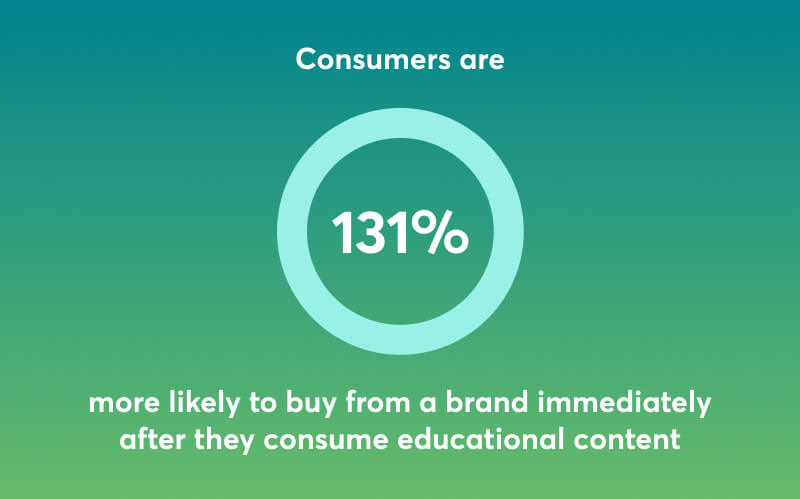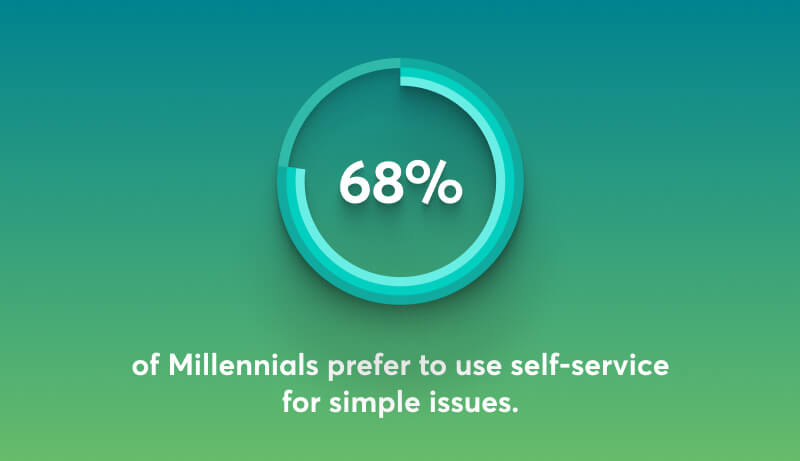Table of Contents
Customer onboarding can really make it or break it for your business. SaaS providers know this better than anyone, but the truth is customer onboarding is essential for any business that cares about keeping their customers.
There are several approaches to customer onboarding: high, mid, low, and tech-touch. Recent research suggests that tech-based solutions are preferred by customers – but all in good time.
In this post, we will explore these 4 popular approaches to customer onboarding, along with the pros and cons of each one. But first, here are three key facts about the importance of customer onboarding that you may not be aware of.
Why Should I Care About Customer Onboarding?
The question is, why wouldn’t you? We won’t drill down to every little way customer onboarding benefits your company, but we will give you 3 universal truths that ought to do it:
1. Increase product adoption
Customer onboarding doesn’t start with the purchase. It starts the first time the prospective client becomes aware of your brand – and educational content at that stage is powerful. In fact, consumers are 131% more likely to buy from a brand immediately after they consume early-stage, educational content. Imagine the power it has next.

Educating your customers on your product is key to increasing product adoption and product usage. As customers discover features and use cases (even ones they didn’t know about), they are better able to leverage the value of your product and make it part of their work or personal routine. When they use it, they like it. The more they use it, the more they like you!
2. Reduce operational costs
As customers become more knowledgeable, the incoming number of support tickets will decrease, and so will one-to-one calls. Customers will be able to turn to a centralized knowledge base, or they might not need it at all if they’ve taken a training course you’ve prepared for them.
Over time and with a streamlined onboarding program in place, you will be able to scale your business without increasing the number of your customer support and CSM agents. This will free up resources for more strategic moves while allowing for a high level of customer service.
3. Prevent customer churn
Customer onboarding additionally helps build a connection with new customers and strengthen loyalty with repeat ones. This happens not only because customers feel valued but also because they are able to incorporate your product into their lives and benefit from it.
We can’t stress enough the importance of customer retention. If you didn’t know it already, it costs 5 to 25 (!) times more to acquire a new client than to retain an existing one.
And now that we’ve made our case for customer education, let’s move on to the 4 common approaches to customer onboarding.
4 Popular Customer Onboarding Strategies
The following strategies are popular customer engagement models. Note that opting for one doesn’t necessarily exclude the other.
1. High-Touch Customer Onboarding
A high-touch onboarding program (and overall customer service) is as personalized as it gets. It involves one-to-one meetings with step-by-step walkthroughs of the product and frequent check-ins from a dedicated Customer Success Manager (CSM). The goal of the check-ins is to anticipate customer needs and prevent any issues before they arise, adding an additional layer of personalized assistance and attention.
On the flip side, high-touch onboarding is also high maintenance. This is why most businesses offer this service to their most high-paying clients. Even so, you may not be able to keep it up as your business grows, as it requires a lot of time and involvement from your customer success team, which can’t grow at the same rate.
Pros
- Highly personalized and engaging
- Promotes product adoption & prevents customer churn
- Access to honest customer feedback helps uncover pain points sooner
- Contributes to higher Customer Lifetime Value
Cons
- Expensive
- Hard to implement (conflicting time zones)
- Hard to scale (resource-heavy)
2. Mid-Touch Customer Onboarding
Mid-touch customer onboarding involves face-to-face interactions, but on a lesser level. A common example is a webinar where you do product tours and step-by-step tutorials – except these webinars are open to your entire customer base and are not one-to-one. This approach requires the involvement of more team members but on a lower scale and frequency.
For example, your customer support team might be present to answer technical questions about your product on the spot while your CSMs or product team do the presentation. Usually, there’s also a timeslot allocated for FAQs where customers can ask follow-up questions. Υour team might also send a follow-up email with product tips.
Pros
- Highly scalable
- Accessible to all clients
- Somewhat personalized
- Cost-effective
Cons
- Resource intensive
- Complex implementation (with multiple teams involved)
3. Low-Touch Customer Onboarding
Low-touch customer onboarding is mostly self-service onboarding. It means that you automate a big part of the customer onboarding process. With this approach, old and new users will find a knowledge base with customer support articles and videos describing key functionalities and maybe receive an occasional email with tips and advice or updates about new product features.
As the name suggests, there is not much personal contact involved. This approach is not ideal to build true customer engagement since the customer barely interacts with anyone in the company.
Solely relying on low touch is not effective customer onboarding for very complex products or for customers that are not tech savvy. Still, it’s a decent solution for small businesses that can’t afford to deploy full-pledged customer training or offer personalized customer support.
Pros
- Budget-friendly
- Highly scalable
- Accessible to all clients
Cons
- Not effective for complex products or inexperienced users
- Lacks personalization and, therefore, has a lower impact on customer satisfaction than other strategies
4. Tech-Touch Customer Onboarding
Living in the digital age, it’s no exaggeration to say that a successful customer onboarding experience must involve the use of technology, and that includes AI as well. Customers are expecting to have access to resources that will allow them to solve issues on their own.
A research Salesforce survey shows that 61% of customers prefer to use self-service for simple issues. And this percentage is even higher among younger generations – 68% for Millenials and 64% for Gen Z. (“Simple” is key here – more complex issues require personalized assistance).

Tech-touch user onboarding involves a wide array of activities, some of them also used in low and medium-touch strategies:
Pros
- Modern approach
- Highly scalable
- Cost-effective
- Effective and consistent user onboarding
- Nurtures customer relationships
- Accessible to all clients
Cons
- Resource intensive
Is Tech-Touch Customer Onboarding The Best Choice?
In most cases, yes! A tech-touch user onboarding process doesn’t mean fully automated, impersonal onboarding. It means using technology (besides your CRM to store customer data) to educate and connect with your customers.
Especially if you decide to go with a customer training program, you will be able to build your own community of brand advocates who can engage in discussions and share tips. And by offering a training course that showcases your product from A to Z, your customers will become proficient faster. If that sounds like a good idea, see some of the top customer education platforms to centralize and scale your customer education program.
A tech-touch customer onboarding not only doesn’t exclude access to CSMs; if anything else, it offers instant, on-demand access to resources to everyone without distinguishing between low-tier and high-tier customers. Plus, the option to connect through multiple touchpoints increases customer engagement and brand loyalty.
A tech-touch customer onboarding strategy also allows customers to choose among multiple resources, therefore creating a more tailored user experience for them. Despite the initial investment, in the long run, a tech-touch approach is the most cost-effective and efficient solution as it reduces the number of support tickets and one-to-one consultations.
First Impressions Matter
… but so do the second and third ones! If you want first-time customers to become “good customers,” then your onboarding checklist should include more than a welcome email. From optimizing your sales process to increase conversion rates to offering after-purchase support, a positive customer experience should involve multiple touchpoints.
The tech-touch model is the most profitable and effective customer success model for most businesses. It enables you to offer your customers relevant educational resources accessible from different sources, therefore helping them use your product effectively.
LearnWorlds LMS is the perfect fit for your customer education program. Help your customers discover and use your product through engaging videos, microlearning content, and fun quizzes. Enable them to access training material wherever they are through a branded mobile app. Boost your brand and even monetize your program with our white-label platform and eCommerce features.
Sign up now for a 30-day free trial!
Further reading
- 10 Best Customer Education Platforms
- Bite-Sized Courses: Unlock The Door to Effective Customer Training
- How To Boost Your Customer Success With Customer Onboarding
- Customer Training: 12 Important KPIs You Need To Measure Success
- The Blueprint to Build and Scale a High-Impact Customer Education Program

Androniki Koumadoraki
Androniki is a Content Writer at LearnWorlds sharing Instructional Design and marketing tips. With solid experience in B2B writing and technical translation, she is passionate about learning and spreading knowledge. She is also an aspiring yogi, a book nerd, and a talented transponster.

